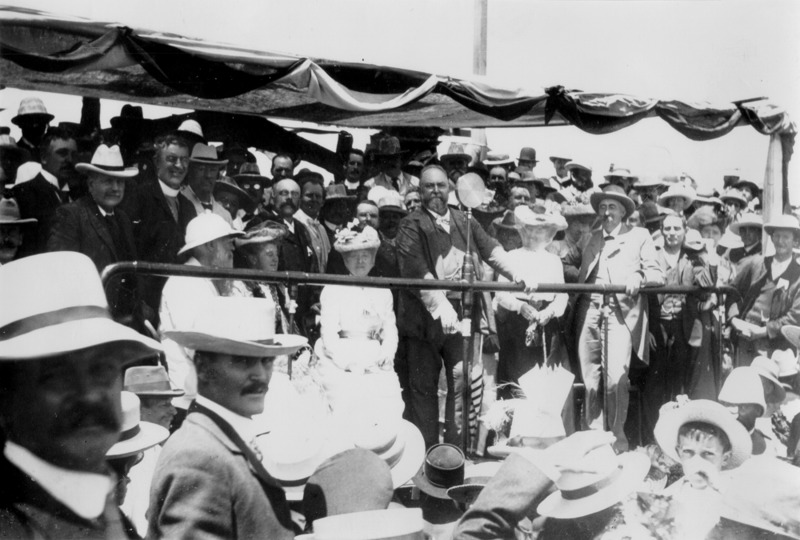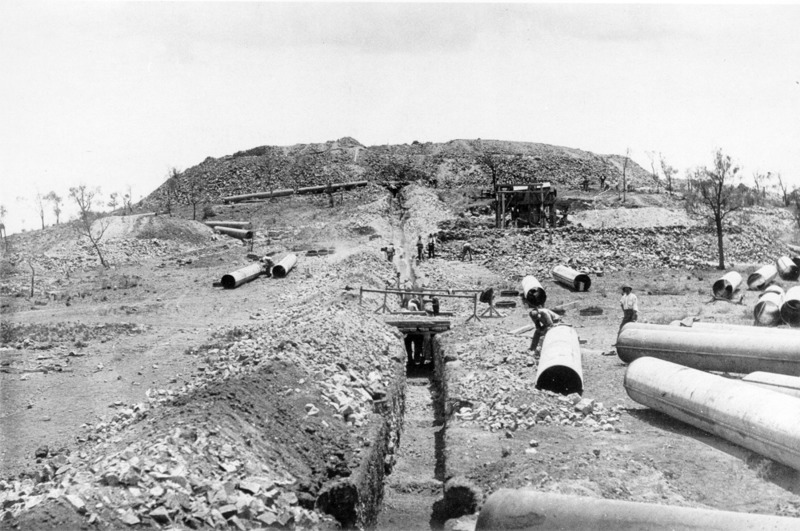Goldfields Water Supply Scheme
The Goldfields Water Scheme was completed in 1903. In a remarkable feat of engineering a pipeline more than 600 kilometres long connected the Western Australian goldfields, and the communities along it, with a safe and reliable supply of water.
The residents of the goldfields had agitated for the provision of a range of services, particularly fresh water, from the Western Australian Government since the mid-1890s. It was one of the issues which fostered antagonism between "t'othersiders" and "sandgropers". John Forrest was reluctant to spend money on public works in the Western Australian goldfields, as its reserves of gold could have easily petered out as they had elsewhere.
Government spending on infrastructure such as the Fremantle Harbour and the extension of the Western Australian railway network, was eventually assigned to the Goldfields Water Scheme when it was clear that the alluvial gold which began the gold rush was accompanied by large underground deposits which could sustain a long-term industry.
Focus questions
- Who was the engineer responsible for the construction of the Goldfields Water Scheme? What difficulties did he face in its construction? What is his legacy to the development of Western Australia?
- Why did the issue of fresh water cause antagonism between “sandgropers” and “t’othersiders”?
- What was the impact of the Goldfields Water Supply Scheme to the contuning success of the goldfields region?
- What is infrastructure and why is it important for a government to invest in it? Name some infrastructure projects that the Western Australian Government is currently investing in?
Key words
Infrastructure
Goldfields Water Supply Scheme
Public works
Further reading
Western Australian Museum - Getting gold without water
National Trust of Western Australia - The Golden Pipeline


